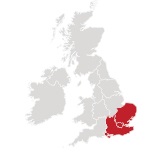Private Treaty
 OFFERS INVITED
OFFERS INVITED
Machine learning (AI) based geophysical processing and interpretation technology code for the Minerals and Oil and Gas sector
By order of the Liquidators of Optic Earth Ltd
Location:
South of England
Offers Invited: Immediately
Equipment to include:
(Subject to Availability)
- Two code packages
- Total development costs to date £868k
- Code language: Python
- Total revenue generated to date: £715k (generated primarily through innovation budgets)
- No current users
The codes developed are designed to be used to support the exploration and discovery of new sub-surface (underground) Mineral deposits (Base, Battery Metals and other Minerals) and Oil and Gas deposits. With further development, the same codes may be used to support discovery and monitoring of other activities such as geothermal, environmental and engineering geophysics and CCUS applications.
Code Package 1
Machine learning (AI) based geophysical inversion package. The code allows for inversion of geophysical data. The input to the code are field Seismic (Streamer or OBN), Tensor Gravity, Airborne Gravity Gradiometry and Magnetic data. The output is a 3D geophysical property model (P-wave Velocity, Density, Magnetic susceptibility). Component overview:
- 3D model building toolkit that can create 3D property models from input wireframes or surfaces
- A scalable model warping code that can manipulate the above (hard and soft rock) to create many thousands of subsurface property models
- 2d and 3d Convolutional Neural Networks that can be used to create a mapping between field geophysics and geophysical property fields
- Inference code (for inversion) including a variety of QC products including residual analysis
- QC code using uncertainty estimation techniques.
Code Package 2
A map based “project generation tool” that uses machine learning and statistics to find potential greenfield mineral deposits. Inputs are Geochemical, Radiometric and Magnetic data. Outputs are heat maps or maps of locations of likely mineral deposits. The code has the potential to provide a 2D prediction (map based) of likely mineralised zones. Component overview:
- Python codes for basic pre-processing of radiometric, magnetic and geochemical data.
- Clustering workflows including K-Means, Hierarchical
- Convolutional neural networks and other machine learning techniques to predict the potential for mineralisation based on the input data.
*Additional R&D would be required to convert the current code into “off the shelf” production software.
All assets are sold as seen, without warranty and remain the property of the vendor until cleared funds are received in full - Viewing is strongly recommended
For full details of viewing, clearance payment, export terms and specific arrangements refer to Notice to Purchasers
All assets are sold in accordance with our Standard Terms and Conditions of Sale
Lambert Smith Hampton is regulated under the Money Laundering Regulations 2017 and will not accept transactions in cash which exceed £7,000 under any circumstance
Get in touch

Email me direct
To:

